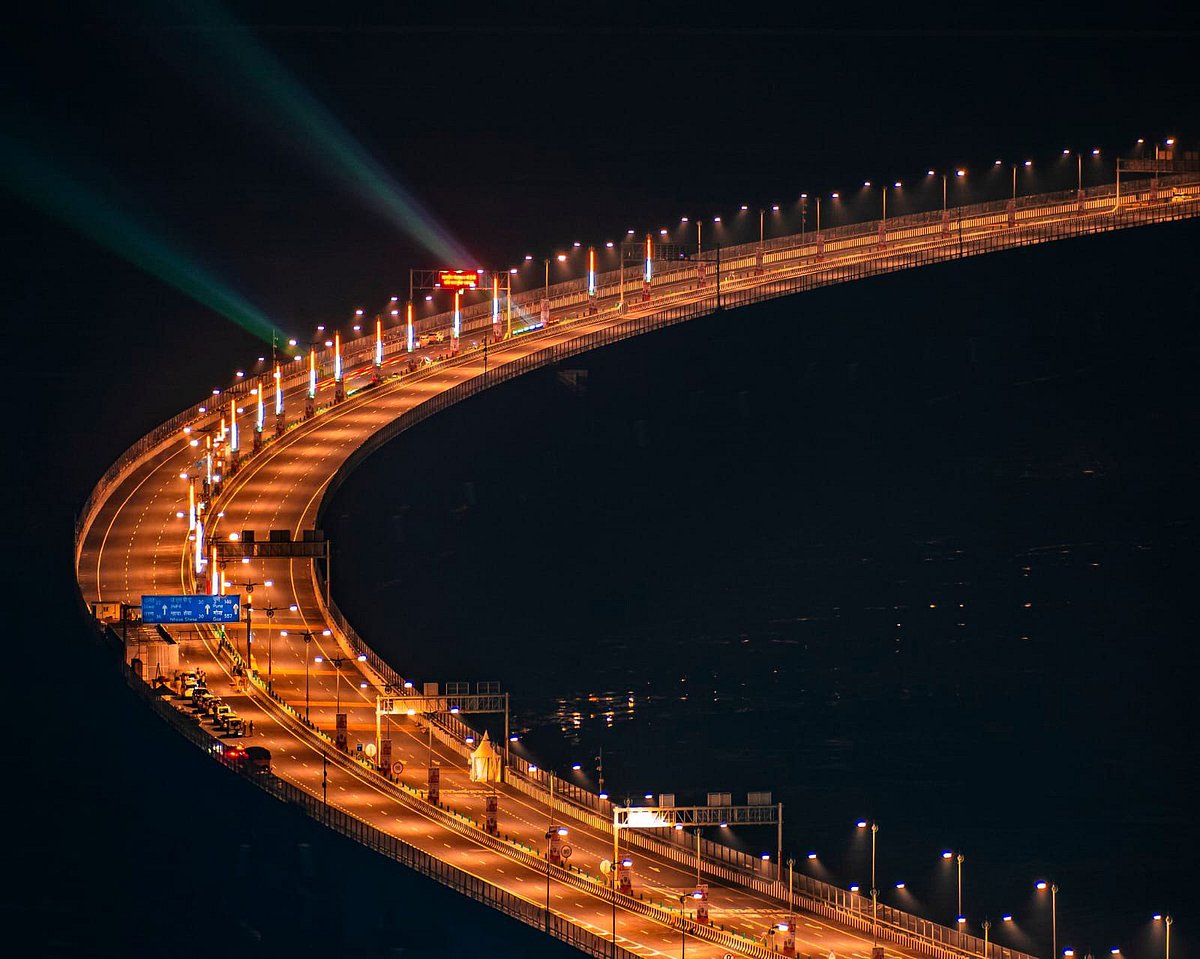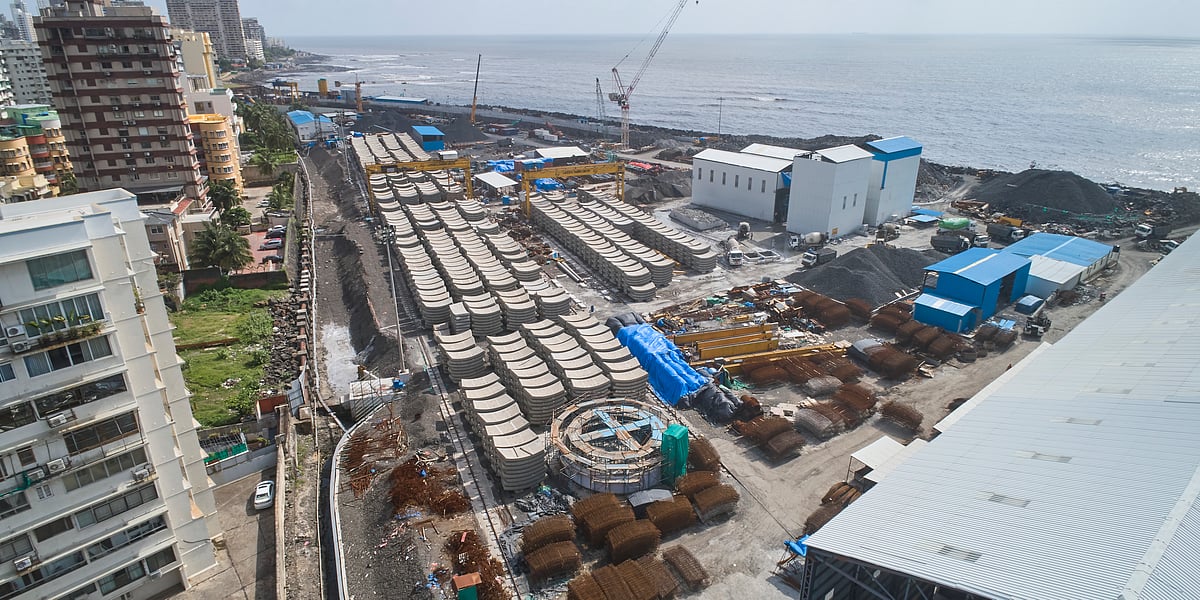Atal Setu Opens As Mumbai's Rs 80,000-Crore Mega Makeover Takes Shape
The bridge is one of the several public infrastructure projects aimed at reducing the burden on the city's lifeline suburban rail that ferries more than 75 lakh people daily.

Atal Setu, India's longest sea bridge, opened on Friday as the Rs 80,000-crore mega makeover of Mumbai's public infrastructure is finally taking shape.
The Mumbai Trans Harbour Link, connecting India's financial capital with the satellite city of Navi Mumbai, was inaugurated by Prime Minister Narendra Modi.
The 21.8-kilometre bridge, officially called the Atal Bihari Vajpayee Sewri-Nhava Sheva Atal Setu, has been built at a cost of Rs 21,200 crore. The six-lane link, with a 16.50-km stretch on the sea, is expected to cut travel time from Navi Mumbai to South Mumbai from just under two hours to about 20–25 minutes.
VIDEO | PM Modi inaugurates Mumbai Trans Harbour Link (MTHL), the longest sea bridge in the country, in Navi Mumbai.
— Press Trust of India (@PTI_News) January 12, 2024
The MTHL, also known as Atal Setu named after former PM Atal Bihari Vajpayee, originates from Sewri in Mumbai and terminates at Nhava Sheva in Uran taluka in⦠pic.twitter.com/Z9cy8S1vAD

A view of the Mumbai Trans Harbour Link (Source: Government of India)
It will ease the burden on the existing Vashi-Mankhurd bridge and Thane–Airoli bridges that connect the city with the mainland.
The bridge is one of several public infrastructure projects, many of which were planned decades ago, aimed at making commuters' lives easier and reducing the burden on the city's lifeline suburban rail that ferries more than 75 lakh people daily. Besides the trans-harbour link, the first part of the north-south coastal road from Worli to Marine Lines is also scheduled to be operational by January end.
Poor public infrastructure in a geographically constrained region has been a perennial problem for over 2 crore people living in the Mumbai Metropolitan Region, which also covers Navi Mumbai and Thane.
Among the other projects that would ease travel for commuters are the metro, the Goregaon Mulund Link Road, and the Borivali Thane Link Road.
Mumbai Metro
The city-wide metro rail network, comprising 14 lines with one underground, is under construction and is expected to be fully operational by October 2026.
Two lines—-2A and 7—connecting suburban Dahisar with Andheri are already in use, apart from the Ghatkopar to Versova line that started operations in 2014.
When completed, the city will have a 356.97 km network of metro rail with over 200 stations. This 33.5-km Metro Line 3, also called the Aqua Line, will be underground. Connecting Colaba-Bandra-Seepz, it is expected to be ready for commute by April, according to media reports. This line alone is expected to cost Rs 37,275 crore.

The Metro-3 carshed at Aarey. (Source: Mumbai Metro Rail Corp)
Coastal Road Project
The Rs 13,000-crore coastal road will provide an alternative north-south trunk route to improve mobility.
The 10-5-kilometre long first phase connecting Marine Drive and Worli is expected to be ready by the end of January or early February.
It features two carriageways with four lanes each for north- and south-bound traffic. Each carriageway includes an extra lane dedicated to public buses. The project also boasts India's first undersea tunnel.
Phase 2 of the Mumbai Coastal Road project will start from the Bandra end of the Bandra-Worli Sea Link and end at Kandivali. The government has plans to extend the network further north to the Dahisar-Bhayander towns.
The road is expected to cut travel time from South Mumbai to Kandivili in the suburbs from about two hours to 40 minutes.

Haji Ali Interchange of the Mumbai Coastal Road Project. (Source: BMC website)

Casting of Permanent Rings for Southbound Tunnel of the Mumbai Coastal Road Project. (Source: BMC website)
Other mega infrastructure projects in the pipeline are:
Goregaon Mulund Link Road: A 12.2-km road connecting the Western Express Highway at Goregaon to the Eastern Express Highway at Mulund.
Borivali Thane Link Road: An 11.8 km twin tube tunnel is proposed between Thane and Borivali under Sanjay Gandhi National Park.
Virar Alibaug Multimodal Corridor: A 126-km approved 8–14-lane access-controlled expressway to connect three districts: Raigad, Thane, and Palghar.
Mumbai Delhi Expressway: A A 1,350-km-lo, 8-lane-wide access-controlled expressway.
The Modi government's flagship Mumbai-Ahmedabad High Speed Rail (bullet train project) is also under development and is expected to start operations by 2026. The Rs 1.1 lakh crore project is backed by Japanese financing and technology.
Apart from the government-funded public infrastructure projects, the Navi Mumbai International Airport being developed by the Adani Group is aimed at easing the burden of the existing Mumbai airport. It is expected to start commercial operations in December 2024.